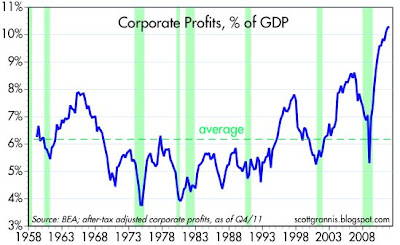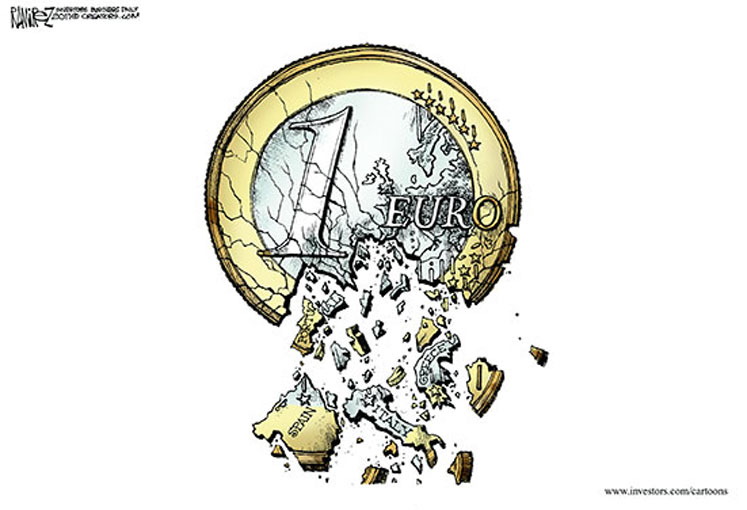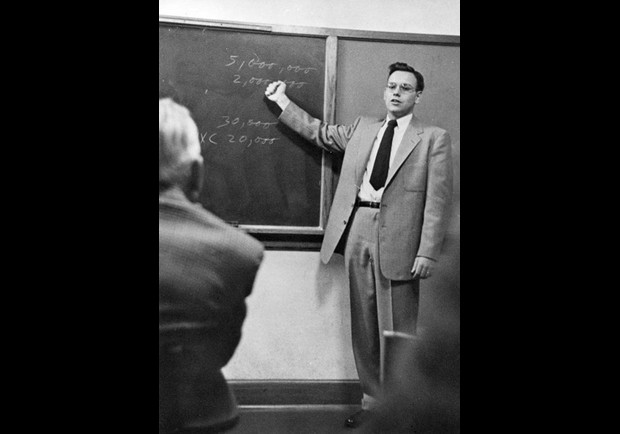
“In business, I look for economic castles protected by unbreachable ‘moats’.”–Warren Buffett
According to Buffett, the wider a business’ moat, the more likely it is to stand the test of time. In days of old, a castle was protected by the moat that circled it. The wider the moat, the more easily a castle could be defended, as a wide moat made it very difficult for enemies to approach. A narrow moat did not offer much protection and allowed enemies easy access to the castle. To Buffett, the castle is the business and the moat is the competitive advantage the company has. He wants his managers to continually increase the size of the moats around their castles.
When looking to purchase a business, Buffett pays careful attention to a business he understands not just in terms of what the business does but also of “what the economics of the industry will be 10 years down the road, and who will be making the money at that point.” He is “also looking for enduring competitive advantages.” This, in a nutshell, is what makes a company great: the width of the moat around the company’s core business.
The recent CIMA newsletter with interviews of von Mueffling, Michael Karsch, Sam Zell and others is excellent because the interviewees (without meaning to) emphasize many of the points we have been trying to learn, especially about how to analyze franchises. For example, we have been reading Competition Demystified and working through the case studies to help us understand different competitive moats and how companies competitively interact. Noting that a company has a high ROIC and stable market share over several years is a strong indication of a moat but not a guarantee. You then have to study the industry and the sources of competitive advantage. As beginners, we yearn for a paint-by-numbers-approach which is understandable and easy to apply. As you practice and study industries/companies on your own, you can apply the lessons and hopefully then go beyond using your own creativity. To be really successful, you will need to be independently thoughtful and creative. Read the entire letter here:
http://www4.gsb.columbia.edu/null/download?&exclusive=filemgr.download&file_id=7220372
Highlights of important lessons
My comments are in italics
William von Mueffling
One can broadly divide value investing into two camps. The first camp is the Graham & Dodd style which is buying assets at a discount or cash at a discount. The second camp is the Buffett style, which I characterize as buying financial productivity at a dis-count. We fall into the second camp. We believe that there are many different types of moats to be found, and that a moat around a business should allow it to produce outsized margins and wonderful returns on capital. The trick is being able to buy this stream of cash flows at a discount. Unlike Graham & Dodd investing where you might look at low price-to-book value companies or net-net companies, we are trying to buy high financial productivity at a discount to its intrinsic value.
Your editor has been using the terms franchise (Buffett style) and non-franchise (Graham & Dodd Asset style) to distinguish investments. You want to buy cash flows at a discount—a wide discount that will incorporate a margin of safety and adequate return as you define adequate rate of return.
Then there are a group of companies where the moat is a network. Names we own in this area are Right-move, the leading property website in the UK and OpenTable, the dominant restaurant reservation web-site in the US. OpenTable is a destination website without physical assets. One of the things happening on the internet now is that verticals are being owned by dominant portals. People do not go to multiple web-sites for things like travel, dinner reservations, and real estate. If there is a dominant portal then there is a winner-take-all phenomenon. For example, Priceline is the dominant portal for travel in Europe. Similarly, Rightmove ―owns‖real estate in the UK. The stronger these portals get, the bigger the network effect and the higher the prof-its.
Our job as analysts is to spend the entire day asking ourselves: ―what do we get and what are we paying for it? There is a reason why large cap pharmaceuticals trade at low PE multiples and a reason why Amazon.com trades at a very high PE multiple. We all have to work very hard for our keep. The market understands the strengths and weaknesses of various companies. You have to pay more for a company with a great moat.
Respect the market because there is always another person on the other side of the trade from you and one of you is the fool. Understand why the market is perceiving the company the way it is currently. What is your variant perception?
Search Strategy
Tano Santos, Columbia Business School‘s David L. and Elsie M. Dodd Professor of Finance and Economics, has done some great work on high-ROE investing recently. http://www1.gsb.columbia.edu/mygsb/faculty/research/pubfiles/2008/crpuzzle_16.pdf and http://www.nber.org/papers/w11816.pdf His work indicates that the best opportunities are not in the high-ROE companies with the lowest PE multiples – these companies usually have some structural problem such as a lack of growth, or in the case of large cap pharmaceuticals, patents that are expiring. Tano‘s work suggests that the best place to be in high-ROE investing is in names that are neither super-expensive nor super-cheap, where the market has a hard time trying to figure out what the right price is. This is where the best in-vesting returns can be made. This is where we are generally most successful finding opportunities. What typically happens is that the market pays a very high multiple for fast growing companies with the best moats and a very low multiple for high-ROE businesses that have structural issues – neither of these places is the best area to search for ideas. Rather, the best place to look is in the middle of the pack and to figure out which of these companies is mispriced.
The single biggest thing that has changed from when I started my investing career to today is that the macro environment has enormous risks that are now coming to a head. As a result, I think that there are many more value traps to-day. Until the financial crisis, every company seemingly was growing. In the aftermath of the credit bubble and in the years ahead, one thing we can say with some confidence is that we will not have much growth in the West for some time.
You need to be aware of financial conditions and the Fed’s manipulation of the economy through its interest rate policy/actions. Understand Austrian Business Cycle Theory.
In high-ROE investing your time horizon really should be infinite. The fantasy is that you never ever sell any of your holdings. If a company generates very high ROEs and does good things with its cash flow such as reinvesting in the right projects or buying back stock, they will continually grow earnings. Your price target, which you base on next year‘s earnings, will always be increasing so you will reset your price target and continue to hold the stock. The poster child for this is Swedish Match, a company which I first invested in 1995 at Lazard Asset Management, and later when I founded Cantillon. It has been one of the most amazing stocks in Europe during that time. The multiple never gets higher than 17x, but every krona of free cash goes to buying back shares.
The most common mistakes that people make in high-ROE investing is confusing high operating margins and high ROEs with a moat. If it smells like a commodity business but the returns are higher than a commodity business, it is likely still a commodity business. Mistakes I‘ve made have been situations where I have not adhered to this advice and I‘ve fallen in love with the returns generated by a company and failed to pay attention to the nature of the business.
ROE can be misleading if the ROE is not sustainable. Always normalize earnings. Technology can disrupt an ROE. At the same time, you can have industries that go from low ROE to high ROE through consolidation. A good example of this is the US aluminum can industry, which was highly fragmented in the early 1990s. The industry went through rapid consolidation during the 1990s until there were two main players remaining, Ball Corporation and Rexam. ROE went from very low levels to roughly 20% after the consolidation. However, for every example like this I can give you another where an industry goes through consolidation but the return profile does not improve.
The type of industry and the interactions (Prisoner’s Dilemma) between competitors can be critical for profitability.
The way many companies destroy high ROE is through making expensive acquisitions. Heineken‘s core business is an amazing one, but in the late 1990s and early 2000s, it was paying very high multiples for many low-quality brewers. This drove Heineken‘s ROE down and destroyed share-holder value. All of the companies we own throw off a ton of cash, so you have to know what management is going to do with it.
What makes a great investment analyst in your mind?
If being smart and having an MBA were the answer, there would be a lot of great investors. So there must be some other quality that is necessary to be a great investor. I think that quality is good judgment. An analyst needs the judgment to determine that businesses, moats, and management teams may not be as good as they seem. The problem is that this is a very tough thing to interview for.
Judgment is built through reading, practice (case studies) and being diligent and honest in reviewing failures and successes, so keep track of your progress by keeping a journal.
When you see so many mutual funds with 100% turnover, you know that they are not following a robust strategy. Most importantly, find someone whom you enjoy working with. And read a lot.
Michael Karsch
G&D: At Columbia we are taught to look for companies with sustainable moats around the business. But you tend to be more of a ―growth at a reasonable price investor. How do you try and blend the two together?
MK: I‘ve always asked, “Do you want to be a journalist or an editorialist?” Just identifying great companies with large moats around them isn‘t enough. In my opinion, you‘re a journalist in that case and you will probably be a solid role player, not a superstar. I don‘t think you‘re going to I think analysts spend too much time building models and being myopic in that regard and they don‘t spend enough time trying to take a broader perspective. That‘s why we try to stress focusing on an industry before a specific company. This has become a more complex business over time. It used to be enough for a professional football player to be over 300 lbs or a professional basketball player to be over 7 ft. Now you have to be 7 ft. and fast, or 300 lbs and quick. Stock-picking is the same way. You need to be very good with the computer and going through the documents but you also need to be creative.
KEEP LEARNING ALWAYS!
You won’t get rich figuring out whether Porter‘s five forces fit into a given company or not. The value-add is on the editorial side. You be-come a superstar by developing and using your own judgment, rather than what textbooks tell you, to figure out what‘s a great stock and why. You can start by identifying and learning from great stock pickers. Obsessively try and figure out what they‘re doing. And it‘s not just, ―oh, I‘m going to follow XYZ investor, and do exactly what he does. You have to try to understand why they are investing in a particular company and what their point of differentiation is.
He is describing what we all should strive for as developing investors. Here at csinvesting we (you and I) are putting together the building blocks to help YOU use your own judgment regarding analyzing businesses, industries, and various investment problems.
―A great analyst recognizes that this is a mentoring business and actively seeks out mentors in order to become successful. They also understand it’s a non-linear progression business. When an analyst understands that, they’re able to think about their game plan very differently. They understand that the market is always improving and their skill set needs to also.
William Strong: Equinox
What we do different from others is to maintain a very long time horizon. In our industry this is a luxury, as many other investment firms have clients that do not let them do this. As a result of having a very long time horizon, we can sit back and try to logically imagine a very different financial environment than the one we are in today. We are looking for larger themes that will produce epic investment results. We think about the themes that we want to be in, and in those themes, find different great businesses that we want to own. We look for jurisdictions where there are maximum misconception and extreme valuation anomalies.
What advice would you give to students interested in a career in investing?
WS: My strong advice is to do what you like to do. I think there are too many people going into the investment business because of outsized compensation which I don‘t believe can last.
I heartily agree with the gentleman’s advice. We are in a down cycle for Wall Street so pursue your passion.
G&D: What do you look for when hiring an analyst?
WS: One of the things that is really important is the ability to think independently. So much of the value in what we do is disagreeing with the consensus, so you want someone who is comfortable doing that. Also important is the ability to be rational and have good quantitative skills.
Sam Zell
I start by not paying much attention to the market. This is why I suggest you look at the Value-Line tear sheets or an annual report WITHOUT looking at price so you are not influenced by or anchor on price until you reach a conclusion—if you can–on the business.
I think the Street reflects the value of the last share, but the true value of the asset may be more or less than what’s indicated publicly. In the same manner, I don’t make investments predicated on the assumption that there’s a greater fool out there who’s going to buy it from me for more than I paid for it. I look for situations that logically make sense to me.
―I had an inherent skepticism of marketing because I felt that it wasn’t measurable. My philosophy was to invest in businesses that served externally created demand – businesses where I didn’t have to generate demand. As an example, in the mid-80s, I bought the largest dredging company in the world because I knew that every day the rivers and the harbors are silting, creating demand for the product I produced.
Mr. Zell knows his circle of competence and that, in turn, influences where he finds investments.
I reminded myself that everything is about supply and demand. I knew that when the supply and demand curves for boxcars met, I could make a fortune. So I went out and bought all of the used railcars in America. … We did extraordinarily well because we had bought these railcars at significant discounts to replacement cost and yet rented them at market rates. … All anyone had to do was put the pieces together.
Mr. Zell keeps it simple. Note that he uses replacement cost in this particular instance.
―We don’t invest in high-tech, simply because we don’t understand it and because it’s valued on if-come-maybe. … I can do much better prognosticating value on something I understand than on companies that are valued by a third party. That’s really key to how I look at things. I’ve never been willing to depend on a third party to value my investments. I have to value them myself and I have to look at my investments as though I’m going to own them permanently.
One more time: think for yourself; don’t rely on Wall Street.
Other readings:
Alice’s Schroeder’s initial research report on Berkshire Hathaway: http://www.shookrun.com/fa/cases/brk-painewebber.pdf
Big, Bad Bernanke by Louis Lowenstein. Note the readers’ comments. http://www.theatlantic.com/magazine/archive/2012/04/the-villain/8901/?single_page=true












